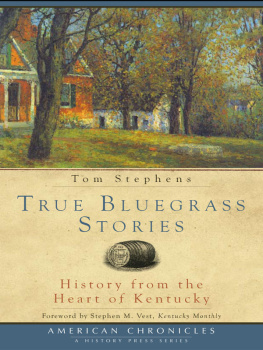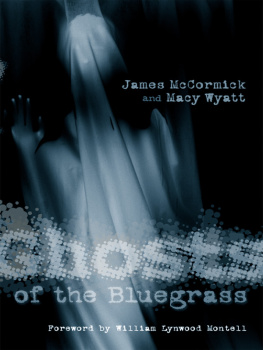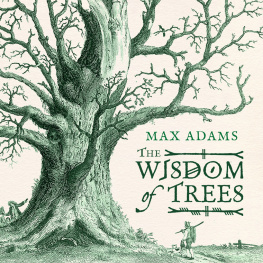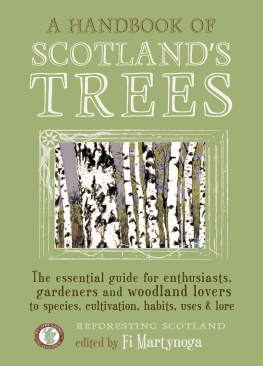Venerable Trees
Venerable Trees
HISTORY, BIOLOGY,
AND CONSERVATION
IN THE BLUEGRASS
TOM KIMMERER

Due to variations in the technical specifications of different electronic
reading devices, some elements of this ebook may not appear
as they do in the print edition. Readers are encouraged
to experiment with user settings for optimum results.
Copyright 2015 by Tom Kimmerer
Published by The University Press of Kentucky, scholarly publisher for the Commonwealth, serving Bellarmine University, Berea College, Centre College of Kentucky, Eastern Kentucky University, The Filson Historical Society, Georgetown College, Kentucky Historical Society, Kentucky State University, Morehead State University, Murray State University, Northern Kentucky University, Transylvania University, University of Kentucky, University of Louisville, and Western Kentucky University.
All rights reserved.
Editorial and Sales Offices: The University Press of Kentucky
663 South Limestone Street, Lexington, Kentucky 40508-4008
www.kentuckypress.com
Maps created by the author using public-domain data. Basemaps used by permission, 2014 ESRT, DeLorme, NAVTEQ. All rights reserved. Unless otherwise noted, photographs are by the author.
Cataloging-in-Publication data is available from the Library of Congress.
ISBN 978-0-8131-6566-0 (hardcover : alk. paper)
ISBN 978-0-8131-6567-7 (epub)
ISBN 978-0-8131-6568-4 (pdf)
This book is printed on acid-free paper meeting the requirements of the American National Standard for Permanence in Paper for Printed Library Materials.

Manufactured in the United States of America.

| Member of the Association of
American University Presses |
The financial support of the following is gratefully acknowledged:
VENERABLE TREES, INC.
The mission of Venerable Trees, Inc., is to conserve the ancient trees of the Kentucky Bluegrass through outreach, publications, education, and research, and to promote the planting of native trees in the urban and agricultural landscapes of the Bluegrass.
BALL HOMES AND DON AND MIRA BALL
Ball Homes is a leader in the housing market in Central Kentucky. In 2014, the company received an award from the LexingtonFayette County Environmental Commission for its ongoing efforts to preserve ancient trees in the Bluegrass.
To Stacey, Will, Greg, and Allison Kimmerer,
Linden, Andy, and Dylan Lane,
Larkin and Dave Podsiedlik,
with love
Contents
Color photographs follow

Figure I.1. A bodhi tree in Sumatra, Indonesia.
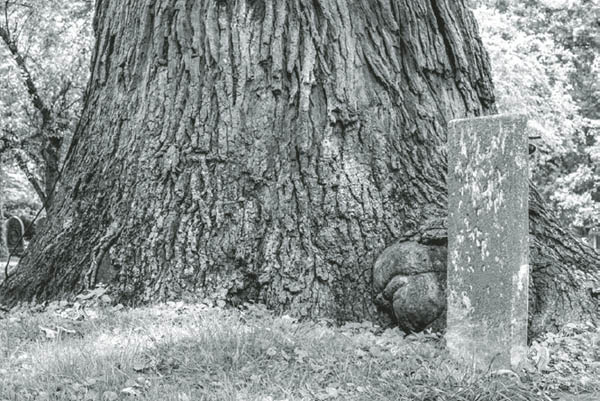
Figure I.2. A bur oak in Lexington Cemetery.
Introduction
Two Trees
Two trees stand on opposite sides of the Earth. One is a bodhi tree near the grave of the royal family in the Karo Highlands of Sumatra. The tree is guarded by, or perhaps is guarding, two stone men, covered in moss and lichen, that nearly blend into the tree. The other tree is an old bur oak shading a grave in the Bluegrass of Kentucky. The headstone has eroded with age and, like the stone men, is draped in moss and lichen. Both trees are ancient, with the stout cylindrical stems and coarse branching of very old trees.
People in all cultures revere large, old trees. From temple trees in Southeast Asia to the giant sequoia and coast redwood groves of the American West, people visit, worship, and love trees. Trees are veneratedheld in awe and esteem.
Our relationship with trees is both practical and reverential. We can easily appreciate a large, old oak tree while comfortably dining at a beautiful oak table. We have always used trees for food, fiber, fuel, and shade. But our relationship with trees also has a deeply spiritual context that dates back to the time before we were even human. Our ancestors were arboreal creatures living in and among trees. When we left the forest, we did not leave the trees behind.
Most of the worlds population is now urban, yet even in cities we surround ourselves with trees. Urban trees have practical utility, cooling buildings and sidewalks, cleaning the air, providing shade. But it is the spiritual connection we maintain with trees that compelled us to bring them along when we left our ancestral forests.
This book is a celebration of the long relationship between people and trees and a cautionary tale of what happens when we neglect that relationship. I will focus on very old trees in two closely related urban and agricultural areas, the Bluegrass of Kentucky and the Nashville Basin. Most of these trees were present before the first permanent settlement in the late 1700s and remain with us today, but they are disappearing and not being replaced. I will refer to these as venerable trees to indicate their great age and value, though with only a few exceptions their exact ages are unknown.
My first venerable tree, the first one that I spent time with and cared about, was an old American beech, rotten at its base, offering plenty of room for a fort, cave, or superheros lair. My beech was a treasure trove for boys and girls in my Baltimore neighborhood; fungi popped from its bark or roots in spring and fall, and insects, fence lizards, snakes, and raccoons wandered in and out of the crevices in the rotting stem. We relished the sweet crunchy beechnuts in the fall and enjoyed the work of extracting them from their shells. There were oaks, maples, plenty of trees whose names I did not know until a decade later. But it was the beech that was the center of our woodland play, and the beech that I remember individually among all the trees of my childhood. Eventually it died and fell, but I can still find traces of the old tree as an umber stripe of decayed wood under leaf litter. Years later, I became a forest scientist and have spent many years devoted to the practical utility of trees. But I never completely lost the reverence for that old beech and all the subsequent trees in my life.
In 1982 I came to Kentucky and soon moved with my family to a small farm in Garrard County, thirty miles south of Lexington. Each day on my commute, I would see giant trees on farms, in abandoned pastures, and in industrial areas. Many of them had the dead tops, or stag-heads, that indicate great age, decline, lightning strikes, or all three. The oldest trees that I saw were bur oak, blue ash, Shumard oak, chinkapin oak, and kingnut, and I began thinking of them as the venerable trees of the Bluegrass.
I began keeping track of all the venerable trees I saw. Over the ensuing years, many of these trees have become very familiar to me, and I watch them change over the seasons and years. Some have died catastrophic deaths, taken by lightning or bulldozers. Others died more slowly for more subtle reasons, and some of these remained standing for decades after their deaths. Still others, but ever fewer, remain hale and hearty, shading horse pastures and gas stations alike.
Next page

